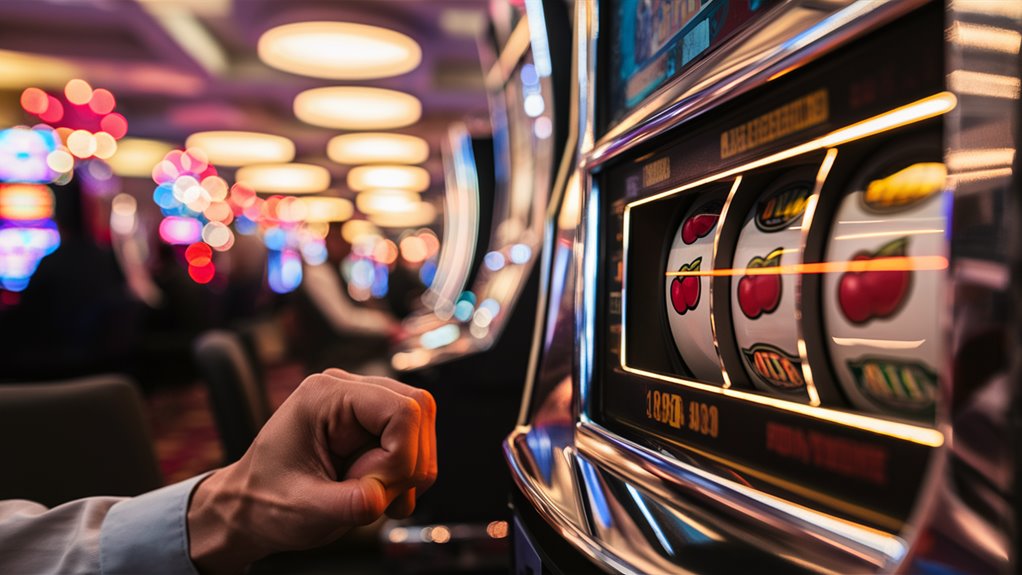
Why Near Misses Affect Our Minds So Much

Our Brains When We Almost Win
Near misses set off a big brain reaction, making up to 80% of the dopamine that true wins do in our heads. The main brain parts in this – the nucleus accumbens and ventral striatum – are key in handling these almost-wins, which make them strong at 신뢰할 수 있는 리뷰 보기 shaping how we act and decide things.
Near Misses in Games and Bets
The betting world has smartly used the pull of near misses in how they design games. Slot machines are made to have a 30% near-miss rate, way more than the normal 12% chance. This sharp move plays on the brain’s joy spot, making players stay longer and play more.
The Mix of Success Signals
Even though near misses can make us feel let down, they also make a kind of success feeling deep down. This mix – being sad yet having a taste of reward – drives a strong wish to keep going after goals with a lot of will.
How It Changes Our Actions and Drive
The mind tricks behind near misses show us a lot about what pushes us and how our brain handles rewards. This shows how our actions are tied to our brain’s happy paths, even when things don’t fully work out. Knowing this helps us get why near misses often push us more than clear losses, whether in games or in going after job goals.
How Almost Winning Messes With Us
The Odd Pull of Almost Making It
Study in mind studies shows that near misses hit our minds in strange ways, making us feel and think a lot. These close ones light up the brain’s dopamine joy paths in ways unlike full wins or clear losses, setting off an odd feel of pleasure, no matter the real result.
Main Mind Moves Behind Near Misses
1. Thinking of What Could Have Been
Near misses strongly make our brain think of other possible ends and “what if” ideas. This makes us more hooked and helps us remember it all more.
2. Seeing Patterns Better
Our brain’s pattern spotting skills get better with near misses, making us think we are close to winning. This often makes us feel like we are nearer to getting it right than we really are.
3. Feelings Get Stronger
The push and pull of almost but not quite there makes our feelings stronger, making near misses stick in our minds and hit hard.
Near Miss Play in Bets and Games
Near miss thoughts really work in betting and game spots.
These spots set off a feeling of being in control, where we see close ones as signs of skill, not just luck. This mind trick, known as the near miss effect, often leads to more try and drive, keeping us in the game even when we haven’t won yet.
Brain Joy Paths and Near Misses
How Brain Joy Works With Near Misses
What Happens in Our Minds When We Almost Win
Near misses turn on special patterns in the brain’s joy paths, different from full wins or clear losses. The dopamine paths light up with near misses much like they do in real wins. Key joy centers, like the nucleus accumbens and ventral striatum, show more brain work then.
Why Almost Wins Matter
Studies show that near misses make about 80% of the dopamine that real wins do. This big brain response shows why we often feel happy even when we just miss or fall short of goals. The brain’s happy paths make a kind of win feel, changing how we act and stay driven.
The Mind Play of Near Misses in Bets: The Strong Pull

How Close Shaves Change Bet Acts
Near misses in bet spots have a big pull on player acts and will to keep going. When betters get these close shaves, like nearly lining up icons on a slot, their brain acts change a lot from just losing.
Study says the dopamine boosts can match real wins, even with no cash win.
The Brain Know-how of Near Misses
Research shows that bet near misses turn on key joy paths in the brain, especially the ventral striatum and insula areas. This creates a keep-going mix-up where players feel pushed to keep on even as they lose more. Game makers use this by making machines that give near misses about 30% of spins – a lot more than the real 12% chance.
How This Hits Problem Gamblers
Problem gamblers show a bigger pull to near-miss effects, with stronger brain action than just for fun players. These close shaves feel more big and pushing for folks with bet issues, possibly speeding up habit acts. The game tricks with near-miss odds pose real risks for these at-risk folks.
Learning From Near-Bad Stuff: A Safe-Talk Guide
Getting Near-Miss Moments
Near misses and big close shaves give groups a big chance to learn without the huge hit of real fails. Groups that use set near-miss reports spot possible dangers 5-10 times better than those just looking at real bad stuff.
Seeing Hidden Dangers
System weak spots often stay hidden until shown through near-miss times.
Study shows that places doing full near-miss checks cut bad accidents by up to 75%.
Building Strong Report Paths
Places must build a spot where telling about near misses is pushed and rewarded.
- Clear paths for reporting
- Safe from payback
- Set looking-into steps
- Ways to talk back
- Putting in plans to stop it from happening again
Ending the Near Miss Loop: A Full Safety Chat
Quick Fix Plans
Stopping near misses needs fast moves when stuff happens.
Safety heads must make clear The Science Behind the Gambler’s Fallacy and How It Affects Betting rules for fast saying what happened and how to respond.
Seeing Patterns Better
Data-led safety checks are key to stopping near misses well. Big picture tools help safety folks see problem spots across different parts, making stopping plans work better.
New Study and Using What We Learn
Big steps in stopping near misses now open new doors through AI-led guessing. These smart systems check big sets of work incident info to spot near-miss patterns before they show up.
VR safety tries show a new way in training for work safety.
Smart safety tools and wearing watching systems are key in modern stopping of near misses.
Putting together IoT-led safety systems with safe acts ideas makes full protection setups that places can use well.


